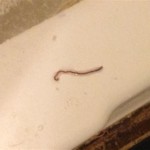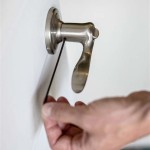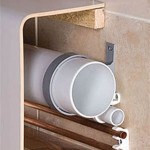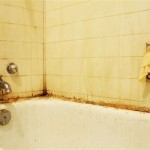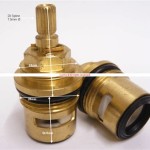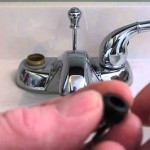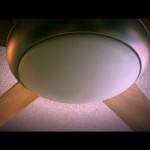Yellow Water Stains on Bathroom Walls
Yellow water stains on bathroom walls are a common problem for homeowners. These unsightly blemishes detract from the aesthetics of the bathroom and can indicate underlying issues that require attention. Understanding the causes of these stains allows for effective treatment and prevention.
Several factors contribute to the development of yellow water stains. One primary culprit is rust. Iron pipes, especially older ones, can corrode over time, releasing iron oxide particles into the water supply. These particles then travel through the plumbing system and eventually manifest as rust-colored stains where water leaks or splashes onto walls. The degree of staining can vary depending on the concentration of iron in the water and the duration of the leak.
Hard water also plays a significant role in the formation of yellow stains. Hard water contains high levels of dissolved minerals, primarily calcium and magnesium. While not inherently colored, these minerals can leave behind off-white to yellowish residues when water evaporates. This is particularly noticeable in areas with frequent water contact, such as shower walls and areas surrounding faucets. The mineral deposits build up over time, resulting in increasingly visible staining.
Copper pipes, while generally more resistant to corrosion than iron pipes, can also contribute to staining. Over time, copper can react with certain chemicals in the water, leading to the formation of greenish-blue or yellowish stains. This is less common than iron-based staining but can still occur, especially in homes with older copper plumbing.
Leaks within the walls themselves can also cause yellow staining. Even small leaks can seep through drywall or other wall materials, carrying dissolved minerals and potentially rust particles. As the water evaporates on the surface of the wall, it leaves behind the staining components. Often, these stains are accompanied by a musty odor and may feel damp to the touch.
Another potential cause is the accumulation of soap scum and body oils. While not directly related to water itself, these substances can interact with minerals in hard water and contribute to a yellowish discoloration on shower walls and surrounding areas. This type of staining is often more prevalent in areas with poor ventilation, as the moist environment promotes the growth of mildew and the buildup of soap residue.
Addressing yellow water stains requires a multi-pronged approach. The first step is to identify the source of the staining. If the stain is due to rust from iron pipes, a whole-house water filter specifically designed to remove iron may be necessary. For hard water stains, a water softener can help reduce mineral buildup. In cases of leaks within walls, repairing the leak is crucial to prevent further staining and potential structural damage. A plumber should be consulted to assess and rectify any plumbing issues contributing to the staining.
Cleaning the existing stains also requires specific methods depending on the nature of the stain. For rust stains, a commercial rust remover or a paste made of lemon juice and salt can be effective. Hard water stains can often be removed with vinegar or a commercial hard water stain remover. For stains caused by soap scum and body oils, regular cleaning with a bathroom cleaner can prevent buildup. Always test any cleaning solution on an inconspicuous area first to ensure it does not damage the wall surface.
Preventing future yellow stains involves addressing the underlying causes. Regularly checking for and repairing leaks is crucial. Installing a water softener or iron filter can significantly reduce mineral buildup and rust stains. Proper ventilation in the bathroom can help prevent the accumulation of soap scum and mildew. Regular cleaning of the bathroom surfaces with appropriate cleaning solutions is also essential for preventing stains from forming.
Choosing appropriate wall materials can also contribute to stain prevention. For example, tiles are generally more resistant to staining than painted drywall. Using mold and mildew-resistant paint in bathrooms can also help to prevent the growth of these organisms, which can exacerbate staining. Proper sealing of grout lines can prevent water penetration and subsequent staining in tiled areas.
By understanding the various causes of yellow water stains and implementing appropriate preventative measures, homeowners can effectively manage this common bathroom issue, maintaining a clean and aesthetically pleasing environment.

Why Do My Bathroom Walls Sweat Yellow Homedcent

How To Fix Yellow Drips On Walls And Ceilings

How To Get Water Stains Off Bathroom Walls Igloo Surfaces

What Causes Water Stains On Walls And Ceilings

How To Remove Yellow Water Stains From Ceiling The Definitive Guide

Why Do Bathroom Walls Sweat Yellow And How To Prevent It Loo Academy

Fixing Yellow Oily Drops On Walls Doityourself Com

How To Clean Yellow Drips On Bathroom Walls Diy 5 Methods

Mysterious Stains Water Or Mold Sap

How To Clean Heavy Staining And Yellowing From Tile Grout Using Simple Solution Express Co
Related Posts
